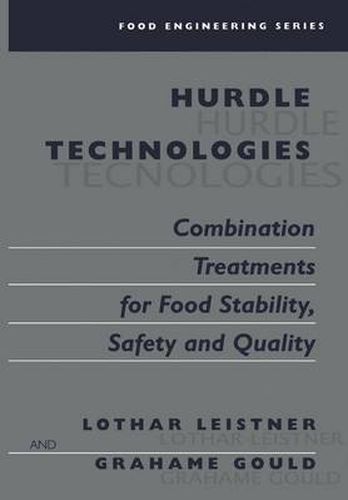Readings Newsletter
Become a Readings Member to make your shopping experience even easier.
Sign in or sign up for free!
You’re not far away from qualifying for FREE standard shipping within Australia
You’ve qualified for FREE standard shipping within Australia
The cart is loading…






This title is printed to order. This book may have been self-published. If so, we cannot guarantee the quality of the content. In the main most books will have gone through the editing process however some may not. We therefore suggest that you be aware of this before ordering this book. If in doubt check either the author or publisher’s details as we are unable to accept any returns unless they are faulty. Please contact us if you have any questions.
For hundreds of years, foods have been preserved by heating, chilling, drying, salting, conserving, acidification, oxygen-removal, fermenting and adding various preservatives, and often these methods are applied in combinations. More recently, the underlying principles of these traditional methods have been defined and effective limits of these factors for microbial growth, survival and death have been established. Food preservation and food quality depends in most cases on the empirical and now more often on the deliberate and intelligent application of combined preservative factors, or on so-called hurdle technology. It has also become obvious that futuristic food preservation methods are most effective in combination with additional hurdles. Thus, hurdle technology is also the key of food preservation in the future. Furthermore, basic aspects of hurdle technology have been recognized to be of fundamental importance and are increasingly studied in relation to hurdle technology. This text addresses all aspects of hurdle technology, including its possibilities and limitations, and provides comprehensive outlines and evaluation. World-renowned on the subject, Leistner and Gould have been instrumental in the development of the hurdle technology concept and have obtained much practical experience in the application of this successful approach in the food industry worldwide.
$9.00 standard shipping within Australia
FREE standard shipping within Australia for orders over $100.00
Express & International shipping calculated at checkout
This title is printed to order. This book may have been self-published. If so, we cannot guarantee the quality of the content. In the main most books will have gone through the editing process however some may not. We therefore suggest that you be aware of this before ordering this book. If in doubt check either the author or publisher’s details as we are unable to accept any returns unless they are faulty. Please contact us if you have any questions.
For hundreds of years, foods have been preserved by heating, chilling, drying, salting, conserving, acidification, oxygen-removal, fermenting and adding various preservatives, and often these methods are applied in combinations. More recently, the underlying principles of these traditional methods have been defined and effective limits of these factors for microbial growth, survival and death have been established. Food preservation and food quality depends in most cases on the empirical and now more often on the deliberate and intelligent application of combined preservative factors, or on so-called hurdle technology. It has also become obvious that futuristic food preservation methods are most effective in combination with additional hurdles. Thus, hurdle technology is also the key of food preservation in the future. Furthermore, basic aspects of hurdle technology have been recognized to be of fundamental importance and are increasingly studied in relation to hurdle technology. This text addresses all aspects of hurdle technology, including its possibilities and limitations, and provides comprehensive outlines and evaluation. World-renowned on the subject, Leistner and Gould have been instrumental in the development of the hurdle technology concept and have obtained much practical experience in the application of this successful approach in the food industry worldwide.